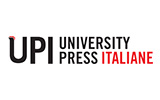Mediations and Voice-Body Technologies in The Stage Works of Du Yun
Nuove Musiche Numero 6 - 2019, pagine: 41-53
DOI 10.12871/97888333957913 | @ Pisa University Press 2021
Pubblicato: 20 dicembre 2021
Abstract
This contribution departs from Du Yun’s concept of composition channelled in the relation she establishes between music theatre and technology. By observing evolving notions of assemblage, creativity and agency, I explore her music theatre output in relation to the numerous languages and agents that compose her multi-faceted style, often conveyed through her use of technologies and techniques conventionally associated with theatre and video-art. Here, I look in particular at Du’s stage works Angel’s Bone (2011, 2015) and Zolle (2004/2005), both addressing issues of societal value through allegorical staging and elaborate sound design. My considerations are framed against the notion of “mediation” explored by Georgina Born, and its interconnection between creative collaborations as determinations of new forms of authorship, human and non-human agents, and on the implication of creativity as a social practice, further incremented by the opportunities allowed by digitisation and remediation. Du’s political notion of composition and performance offers good cause for a different ontology of the work concept, one that, according to Born, incorporates understandings of the current social, technological and temporal dimensions of music. Du recognizes herself as a mediator, both in her agency and capacity to interlace different technologies and practices, and to create a fertile arc between the audience and the performance-makers. In short, what we see at stake in these processes, is the potential for a new music ontology that moves away from the modernist logic of universality and identity – the musical “I” who, isolated and apart, appropriates and frames musical others within the musical work. In marked contrast to the traditional ontology of the work, unitary, self-standing and self-contained, these languages embrace social mediation through a dialogical creative exchange, and an active avidity towards a multiplicity of performance practices, the encompassing realities of race, class, and gender. In this sense, Du ’s theatrical output exemplifies an account of mediation able to address technological, social and cultural changes sweeping across the production and reception of art and its networked forms of representation.
Percorso di valutazione
Peer reviewed. Certificazione della qualità




